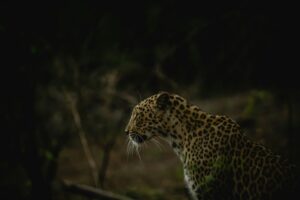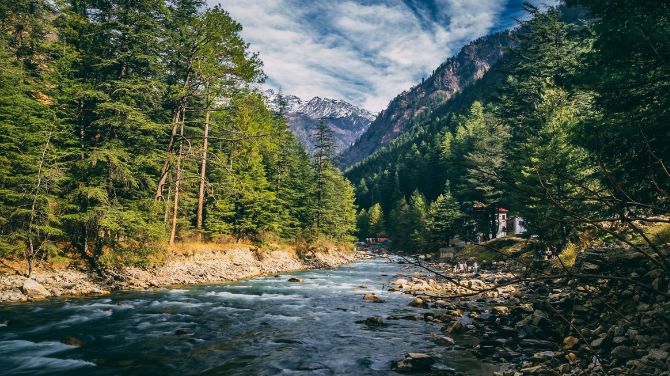Gir National Park, located in the Junagadh district of Gujarat, is the last remaining habitat of the majestic Asiatic lion. But beyond these royal predators, Gir is a biodiversity hotspot, home to over 2,375 species of fauna and flora, attracting nature lovers, wildlife photographers, bird watchers, and adventure enthusiasts alike. If you are planning your trip, understanding the Best Time to Visit Gir National Park from both weather and wildlife perspectives is essential for an unforgettable experience.
Gir’s Seasonal Climate: What to Expect
Gir experiences three major seasons – winter, summer, and monsoon – each influencing the forest landscape, wildlife activity, and safari experiences differently.
Winter (November to February): Pleasant Weather and Rich Biodiversity
Winter is considered the ideal season to visit Gir National Park. During these months, temperatures range between 10°C to 25°C, making it comfortable for safaris and outdoor exploration. The mornings are crisp and misty, and afternoons are sunny but not harsh.
For wildlife enthusiasts:
- Animals are often seen basking in the morning sun to keep warm.
- The forest is lush post-monsoon, making it a beautiful time for photography.
- Bird watchers can spot over 300 bird species, including migratory birds like paradise flycatchers, crested serpent eagles, and flamingos near reservoirs.
For families and leisure travelers, winter offers pleasant safaris without discomfort from heat, making it suitable for children and elderly visitors alike.
Highlights of winter visits:
- Comfortable safari experience
- Good lion and leopard sightings
- Excellent bird watching opportunities
- Lush green landscapes for scenic photography
Summer (March to mid-June): For Guaranteed Wildlife Sightings
If your primary goal is maximum wildlife sightings, especially of the Asiatic lions, then summer is the best time to visit Gir National Park. During these months, temperatures soar to 35°C-40°C. The heat dries up forest foliage, resulting in sparse vegetation and clearer visibility for tracking animals.
Wildlife behavior in summer:
- Animals, including lions and leopards, frequently visit waterholes to quench their thirst.
- Early morning and late evening safaris yield high chances of sightings.
- Photographers prefer this season as the dry, golden-brown forest creates dramatic backdrops for wildlife images.
However, safaris can be tiring due to the heat. It is crucial to wear light cotton clothes, hats, sunglasses, and sunscreen, and carry ample drinking water to stay hydrated.
Highlights of summer visits:
- Highest probability of lion and leopard sightings
- Sparse vegetation improves visibility
- Fewer tourists compared to winter
- Unique dry forest landscapes for photography
Monsoon (mid-June to mid-October): Lush Beauty but Park Remains Closed
During the monsoon, Gir receives substantial rainfall, transforming the forest into a dense, lush green haven. However, Gir National Park remains closed from mid-June to mid-October due to slippery trails, breeding season of lions, and safety concerns.
For travelers visiting Gujarat during monsoon, eco-resorts and buffer villages around Gir offer scenic views, village tourism, and nature walks even though safaris remain unavailable.
Best Safari Timings for Maximum Wildlife Experience
Gir offers two safari slots every day:
- Morning Safari: 6:30 AM to 9:30 AM
- Evening Safari: 3:00 PM to 6:00 PM
Both slots are rewarding, but:
- Morning safaris in winter are ideal for watching lions bask in the early sun.
- Evening safaris in summer are excellent as animals emerge from shaded areas when temperatures cool down.
Tips to Plan Your Gir Trip Effectively
Apart from choosing the best time to visit Gir National Park, consider the following for a smooth and fulfilling trip:
- Advance Safari Bookings: Gir safaris get booked weeks in advance, especially from November to February. Book online via the Gujarat Forest Department’s official website to secure your slots.
- Stay Near Sasan Gir: Choose accommodations near Sinh Sadan Safari Booking Office for convenience, especially for early morning safaris.
- Essential Packing: Carry binoculars for bird watching, a good camera with telephoto lens for wildlife photography, and field guides if you wish to identify flora and fauna.
- Hire Knowledgeable Guides: Forest guides enhance your safari experience by sharing insights on animal behavior, medicinal plants, and local ecology.
- Follow Forest Etiquette: Maintain silence during safaris, do not litter, avoid bright coloured clothing, and respect the natural environment and wildlife.
Final Verdict: When Should You Visit?
- For comfortable safaris with diverse experiences (wildlife + birding + photography): November to February (winter) is ideal.
- For maximum chances of lion sightings and dramatic wildlife encounters: March to mid-June (summer) is the best choice, if you are prepared to handle the heat.
- Avoid planning between mid-June to mid-October (monsoon) as the park remains closed.
Why Gir is Special Beyond Lions
While Asiatic lions are the pride of Gir, the park offers:
- Rich landscapes of dry deciduous forests, teak plantations, and riverine grasslands.
- Animals like leopards, chital, sambhar, four-horned antelopes, and crocodiles.
- Diverse flora with over 500 plant species, from babul acacias to teak and flame-of-the-forest.
Conclusion
Knowing the Best Time to Visit Gir National Park ensures that your trip is comfortable, rewarding, and aligned with your travel goals. Whether you are a wildlife photographer seeking the perfect lion shot, a bird watcher listing migratory species, or a nature lover wanting to soak in Gir’s serene landscapes, planning your visit based on the season will make your safari truly unforgettable. Choose your time wisely and prepare to witness the untamed beauty of India’s royal wilderness.















Leave a comment